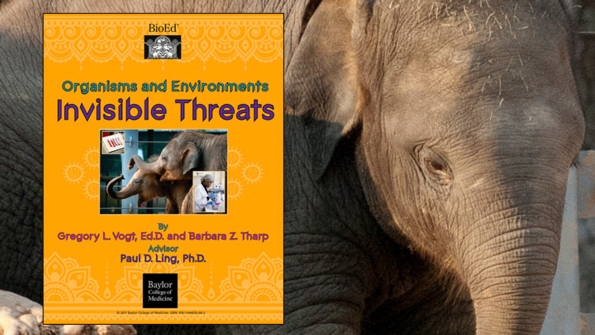Invisible Threats

Asian elephants are threatened by a viral disease.
Baylor College of Medicine
View Website http://bioedonline.org/lessons-and-more/teacher-guides/invisible-threats/
Summary
Inquiry-based activities in the Invisible Threats guide will help you and your students learn about and understand infectious diseases—how they are contracted and prevented. Explorations include infectious disease history, vaccines, links between infectious diseases and climate change, and a team challenge game. Also included are non-fiction stories about polio’s impact on one family, and the race to find a cure for the potentially deadly elephant endotheliotropic herpesvirus. Both stories provide up-close accounts of specific infectious diseases caused by viruses.
- Polio – Students explore the U.S. polio epidemic that occurred from the 1930s–1960s and read about one family’s experience with it.
- What Do You Know About Vaccines? – Student teams investigate the causes, symptoms and treatment of several infectious diseases, and the vaccinations used to protect against them.
- To Vaccinate or Not to Vaccinate, That Is the Question – Students learn about the concept of “herd immunity” by looking at three scenarios for the imaginary town of Fairhaven.
- Who, What, When, Where? – Students construct an infectious disease/vaccine timeline.
- EEHV By The Numbers – Using actual statistics for a virus that attacks baby Asian elephants, students try to find clues that could be useful in combatting the disease.
- The EEHV Menace – Students focus on the virus currently threatening Asian elephants by reading The Index Elephant. Using various art supplies, students then create an exhibit to share with other classes about this deadly threat.
- Climate Change and Disease – Using a climate Internet site provided by NOAA, students explore the possibilities of climate change increasing the spread and range of mosquito-borne infectious diseases.
- And Now, It’s Time for Infectious Jeopardy! – Teams of students compete in rounds of a Jeopardy-style quiz which focuses on what they have learned in the unit.
Organisms and Environments: Invisible Threats is most appropriate for students in grades 6–8, but also may be successfully used with high school students.






